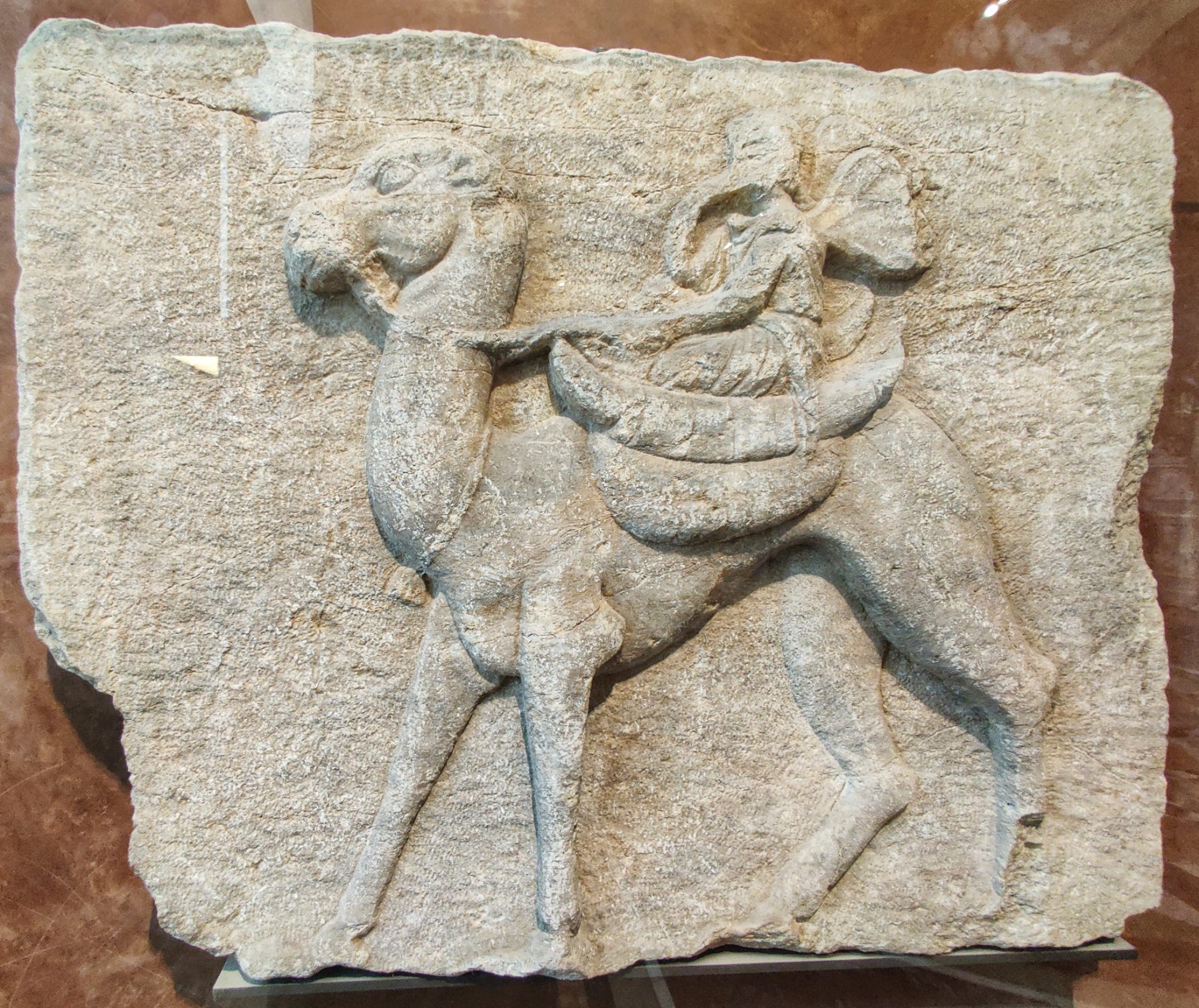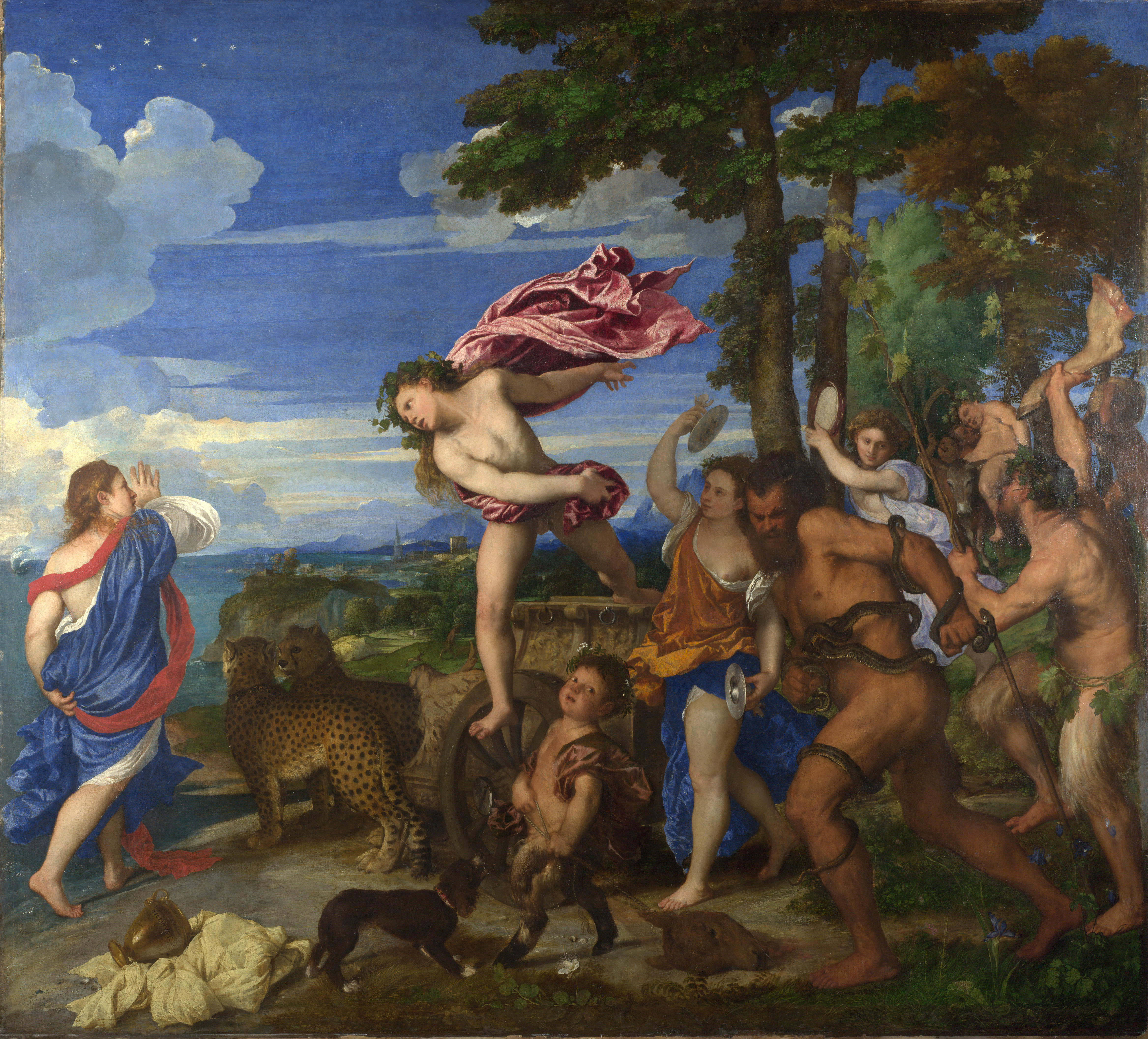|
Corneille Van Clève
Corneille Van Clève ( 10 June 1646 – 31 December 1735) was a French sculptor. Biography Clève was born in Paris in 1646 to a family of Flemish goldsmiths and baptized on 10 June that year. His grandfather, a merchant goldsmith, immigrated to Paris from Flanders and was naturalized by King Henry IV in 1606. Cleve studied under French sculptor François Anguier and received the Prix de Rome scholarship in 1671. After spending several years there at the French Academy in Rome, as well as three years in Venice, Clève returned to France in 1678. On 26 April 1681, he was formally accepted to the Académie de Peinture et de Sculpture upon submission of a marble statue of the cyclops Polyphemus. Clève would be director of the Académie from 1711 to 1714. Clève enjoyed the patronage of both King Louis XIV and Louis XV, earning the King's pension until his death and sculpting numerous statues for the Palace at Versailles. Clève married Marie-Antoinette De Meaux de Vallicre ... [...More Info...] [...Related Items...] OR: [Wikipedia] [Google] [Baidu] |
Cornelis Van Cleve
Cornelis van Cleve, Cornelis van Cleef or Cornelis van der Beke, nickname ''Sotte Cleve'' ('Mad Cleve') (1520 in Antwerp – 1567/1614)Leo van Puyvelde (1942)''The Flemish drawings in the collection of His Majesty the King at Windsor Castle'' p. 13 was a Flemish Renaissance painter active in Antwerp who is known for his religious compositions and portraits. Starting his career in Antwerp in the workshop of his father Joos van Cleve, he later worked for a while in London. When he failed to achieve success in England, he became insane and stopped painting.Cornelis van Cleve at the Life He was born in Antwerp as the son ...[...More Info...] [...Related Items...] OR: [Wikipedia] [Google] [Baidu] |
Académie Royale De Peinture Et De Sculpture
The Académie royale de peinture et de sculpture (; ) was founded in 1648 in Paris, France. It was the premier art institution of France during the latter part of the Ancien Régime until it was abolished in 1793 during the French Revolution. It included most of the important painters and sculptors, maintained almost total control of teaching and exhibitions, and afforded its members preference in royal commissions. Founding In the 1640s, France's artistic life was still based on the medieval system of guilds like the Académie de Saint-Luc which had a tight grip on the professional lives of artists and artisans alike. Some artists had managed to get exemptions but these were based on favoritism rather than merit. According to the 17th century ''Mémoires'' about the founding of the ''Académie royale'', a few "superior men" who were "real artists", suffered and felt humiliated under the guild system. In view of increasing pressure by the Parisian guilds for painters and s ... [...More Info...] [...Related Items...] OR: [Wikipedia] [Google] [Baidu] |
Dionysus
In ancient Greek religion and Greek mythology, myth, Dionysus (; ) is the god of wine-making, orchards and fruit, vegetation, fertility, festivity, insanity, ritual madness, religious ecstasy, and theatre. He was also known as Bacchus ( or ; ) by the Greeks (a name later adopted by the Ancient Rome, Romans) for a frenzy he is said to induce called ''baccheia''. His wine, music, and ecstatic dance were considered to free his followers from self-conscious fear and care, and subvert the oppressive restraints of the powerful. His ''thyrsus'', a fennel-stem sceptre, sometimes wound with ivy and dripping with honey, is both a beneficent wand and a weapon used to destroy those who oppose his Cult of Dionysus, cult and the freedoms he represents. Those who partake of his mysteries are believed to become possessed and empowered by the god himself. His origins are uncertain, and his cults took many forms; some are described by ancient sources as Thrace, Thracian, others as Greek. In O ... [...More Info...] [...Related Items...] OR: [Wikipedia] [Google] [Baidu] |
Tokyo
Tokyo, officially the Tokyo Metropolis, is the capital of Japan, capital and List of cities in Japan, most populous city in Japan. With a population of over 14 million in the city proper in 2023, it is List of largest cities, one of the most populous urban areas in the world. The Greater Tokyo Area, which includes Tokyo and parts of six neighboring Prefectures of Japan, prefectures, is the most populous metropolitan area in the world, with 41 million residents . Lying at the head of Tokyo Bay, Tokyo is part of the Kantō region, on the central coast of Honshu, Japan's largest island. It is Japan's economic center and the seat of the Government of Japan, Japanese government and the Emperor of Japan. The Tokyo Metropolitan Government administers Tokyo's central Special wards of Tokyo, 23 special wards, which formerly made up Tokyo City; various commuter towns and suburbs in Western Tokyo, its western area; and two outlying island chains, the Tokyo Islands. Although most of the w ... [...More Info...] [...Related Items...] OR: [Wikipedia] [Google] [Baidu] |
National Museum Of Western Art
The is the premier public art gallery in Japan specializing in art from the Western tradition. The museum is in the Ueno Park in Taitō, central Tokyo. It received 1,162,345 visitors in 2016. History The NMWA was established on June 10, 1959. The museum developed around the core art collection of Kōjirō Matsukata (1865–1950), whose thinking is mirrored in the museum he anticipated. Matsukata's acquisition strategies were designed to create the nucleus of what he hoped would become an evolving national museum specializing in Western art. The museum exhibits works from the Renaissance to the early 20th century, many having been acquired since the museum's opening. The museum's purpose is to provide the public with opportunities to appreciate Western art. Since its opening, the museum, as Japan's only national institution devoted to Western art, has been involved in exhibitions, art work and document acquisition, research, restoration and conservation, education and the ... [...More Info...] [...Related Items...] OR: [Wikipedia] [Google] [Baidu] |
Psyche (mythology)
Psyche (; ; ) is the Greek goddess of the soul and often represented as a beautiful woman with butterfly wings. The name Psyche means "soul" in Greek and was commonly referred to as such in Roman mythology as well, though the direct translation is '' Anima'' (Latin word for "soul"). She was born a mortal woman and eventually granted immortality, with beauty that rivaled even Aphrodite, goddess of love. Psyche is known from the novel ''The Golden Ass'', also known as ''Metamorphoses,'' written by the Roman philosopher and orator Apuleius in the 2nd century. In the myth, she was given multiple trials to be with her beloved, Cupid (the Roman counterpart of the Greek Eros), god of physical love and desire and son of Venus. The cultural influences of Psyche's story are depicted in art dating back to the 4th century BCE. In (Metamorphosis - The Golden Ass) ''The Golden Ass'' was written in Latin in the 2nd century CE by Apuleius. The novel consists of eleven books, mainly surr ... [...More Info...] [...Related Items...] OR: [Wikipedia] [Google] [Baidu] |
Loiret (river)
The Loiret () is a long river in France, a left tributary to the Loire. Its waters come from infiltrations from the Loire. Its course is completely within the Loiret ''département'', to which it gives its name. The Loiret, south of Orléans, with its picturesque former mill Mill may refer to: Science and technology * Factory * Mill (grinding) * Milling (machining) * Millwork * Paper mill * Steel mill, a factory for the manufacture of steel * Sugarcane mill * Textile mill * List of types of mill * Mill, the arithmetic ...s, is a popular destination for walking and boating trips. The source of the Loiret is a feature of the Parc Floral de la Source (''Le Bouillon''), and its mouth in Saint-Hilaire-Saint-Mesmin, southwest of Orléans. References * Rivers of France Rivers of Loiret Rivers of Centre-Val de Loire {{France-river-stub ... [...More Info...] [...Related Items...] OR: [Wikipedia] [Google] [Baidu] |
Loire
The Loire ( , , ; ; ; ; ) is the longest river in France and the 171st longest in the world. With a length of , it drains , more than a fifth of France's land, while its average discharge is only half that of the Rhône. It rises in the southeastern quarter of the French Massif Central in the Cévennes range (in the departments of France, department of Ardèche) at near Mont Gerbier de Jonc; it flows north through Nevers to Orléans, then west through Tours and Nantes until it reaches the Bay of Biscay (Atlantic Ocean) at St Nazaire, Saint-Nazaire. Its main tributaries include the rivers Nièvre (Loire), Nièvre, Maine (river), Maine and the Erdre on its right bank, and the rivers Allier (river), Allier, Cher (river), Cher, Indre (river), Indre, Vienne (river), Vienne, and the Sèvre Nantaise on the left bank. The Loire gives its name to six departments: Loire (department), Loire, Haute-Loire, Loire-Atlantique, Indre-et-Loire, Maine-et-Loire, and Saône-et-Loire. The lower ... [...More Info...] [...Related Items...] OR: [Wikipedia] [Google] [Baidu] |
Leda And The Swan
Leda and the Swan is a story and subject in art from Greek mythology in which the god Zeus, in the form of a swan, seduces Leda, a Spartan queen. According to later Greek mythology, Leda bore Helen and Polydeuces, children of Zeus, while at the same time bearing Castor and Clytemnestra, children of her husband Tyndareus, the King of Sparta. According to many versions of the story, Zeus took the form of a swan and slept with Leda on the same night she slept with her husband King Tyndareus. In some versions, she laid two eggs from which the children hatched. In other versions, Helen is a daughter of Nemesis, the goddess who personified the disaster that awaited those suffering from the pride of Hubris. Especially in art, the degree of consent by Leda to the relationship seems to vary considerably; there are numerous depictions, for example by Leonardo da Vinci, that show Leda affectionately embracing the swan, as their children play. The subject was rarely seen in the large ... [...More Info...] [...Related Items...] OR: [Wikipedia] [Google] [Baidu] |
Gardens Of Versailles
The Gardens of Versailles ( ) occupy part of what was once the ''Domaine royal de Versailles'', the royal demesne of the Palace of Versailles, château of Versailles. Situated to the west of the Palace of Versailles, palace, the gardens cover some of land, much of which is landscaped in the classic French formal garden style perfected here by André Le Nôtre. Beyond the surrounding belt of woodland, the gardens are bordered by the urban areas of Versailles (city), Versailles to the east and Le Chesnay to the north-east, by the National Arboretum de Chèvreloup to the north, the Versailles plain (a protected wildlife preserve) to the west, and by the Satory Forest to the south. Administered by the Public Establishment of the Palace, Museum and National Estate of Versailles, an autonomous public entity operating under the aegis of the Ministry of Culture (France), French Ministry of Culture, the gardens are now one of the most visited public sites in France, receiving more than s ... [...More Info...] [...Related Items...] OR: [Wikipedia] [Google] [Baidu] |
Ariadne
In Greek mythology, Ariadne (; ; ) was a Cretan princess, the daughter of King Minos of Crete. There are variations of Ariadne's myth, but she is known for helping Theseus escape from the Minotaur and being abandoned by him on the island of Naxos. There, Dionysus saw Ariadne sleeping, fell in love with her, and later married her. Many versions of the myth recount Dionysus throwing Ariadne's jeweled crown into the sky to create a constellation, the Corona Borealis. Ariadne is associated with mazes and labyrinths because of her involvement in the myths of Theseus and the Minotaur. There are also festivals held in Cyprus and Naxos in Ariadne's honor. Etymology Greek lexicographers in the Hellenistic period claimed that ''Ariadne'' is derived from the ancient Cretan dialectical elements ''ari'' (ἀρι-) "most" (which is an intensive prefix) and ''adnós'' (ἀδνός) "holy". Conversely, Stylianos Alexiou has argued that despite the belief being that Ariadne's name is of ... [...More Info...] [...Related Items...] OR: [Wikipedia] [Google] [Baidu] |
Princes Of Conti
Prince of Conti (French: ''prince de Conti'') was a French noble title, assumed by a cadet branch of the princely house of Princes of Condé, Bourbon-Condé. History The title derives its name from Conty, a small town in northern France, c. 35 km southwest of Amiens, which came into the Bourbon-Condé family by the marriage of Louis I, Prince of Condé, Louis de Bourbon, first Prince of Condé, with Eléanor de Roucy de Roye, Eleanor de Roye in 1551. François, Prince of Conti, François de Bourbon (1558–1614), the third son of this marriage, was given the title of ''marquis de Conti'' and was later elevated to the rank of ''prince de Conti''. He died in 1614 and the title lapsed, since his only child had predeceased him in 1610. In 1629, the title of Prince of Conti was revived in favor of Armand de Bourbon, Prince of Conti, Armand de Bourbon (1629–1666), second son of Henry II, Prince of Condé, and brother of Louis II de Bourbon, Prince de Condé, Louis, the ' ... [...More Info...] [...Related Items...] OR: [Wikipedia] [Google] [Baidu] |







